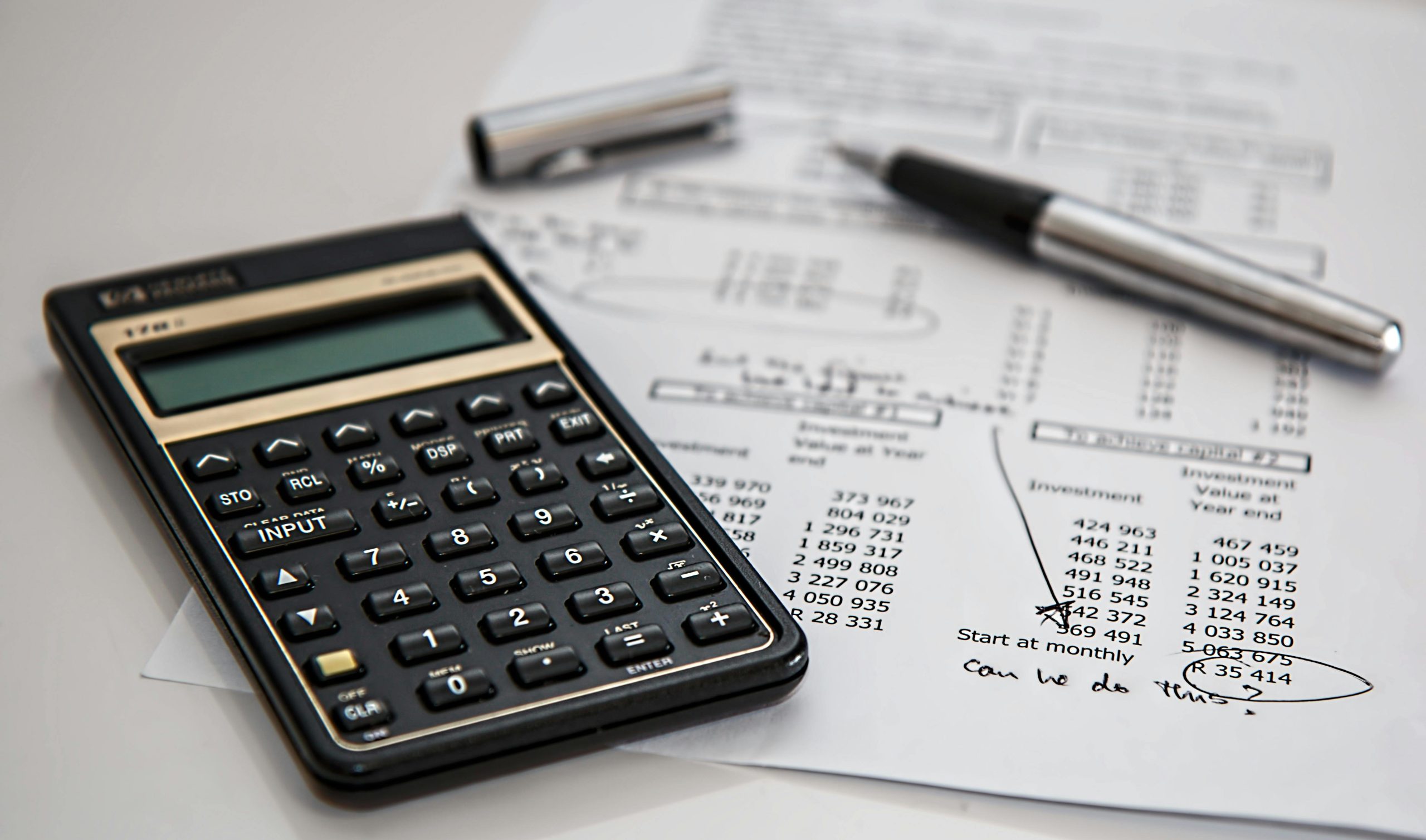
My Latin might be rusty, but is this the business equivalent of “don’t sweat the small stuff”?
De minimus is Latin for “not a big deal.” The Internal Revenue Service has a duty to the American people to ensure everyone pays their share, but qualifying expenses might be “not a big deal.”
De minimis safe harbor election is an optional method available to taxpayers who incur small-dollar expenditures on tangible property to deduct these costs immediately as business expenses in the year they are paid or incurred. It simplifies and provides audit protections to taxpayers who maintain applicable financial statements or have an annual election to apply the de minimis safe harbor.
Types of Property Covered by the Election
The De Minimis Safe Harbor Election provides small businesses with the option to immediately expense small-dollar expenditures for certain tangible property, rather than capitalizing and depreciating it over time.
Under this provision, several types of property are eligible for the election:
- materials and supplies
- personal property
- buildings
- improvements
- or any other tangible property used in business operations
However, to qualify for this election, the property must meet specific criteria and not be subject to the amortization rules.
To determine which property is eligible, taxpayers must consider the concept of a “unit of property.” This term refers to the smallest component of property that is significant enough to be considered a separate asset for tax purposes. In other words, this is the smallest grouping of property that can be depreciated as a single unit.
For instance, suppose a business has several computers purchased for the employees. The unit of property would be the individual computer rather than the entire system or network. Under the De Minimis Safe Harbor Election, each computer would be considered a discrete unit of property, and the company could elect to expense the purchase of these computers up to a certain threshold.
While several types of tangible property are covered, certain property may not qualify. For instance, property that is subject to the amortization rules, such as intangible property, is not eligible. Additionally, real property such as land or buildings are also excluded unless they qualify as eligible building property.
Define the de minimis rule
The de minimus rule offers an administrative convenience for taxpayers and reduces the potential for federal tax disputes during audits. The purpose of the safe harbor election is to simplify the tax accounting process for small-dollar expenditures, lower compliance costs, and reduce administrative burdens. The types of property covered by the rule include materials and supplies, personal property, buildings, improvements, or any other tangible property used in business operations that meet certain criteria.
To qualify, taxpayers must meet specific requirements and adhere to cost thresholds.
For tax years 2016 and later, the cost of each item of property must not exceed $2,500 for taxpayers without an audited financial statement, or $5,000 for those with an audited financial statement.
The election must be made annually on the taxpayer’s federal tax return.
Taxpayers can make the election by using any permissible method of accounting. The accounting methods allowed include expensing the entire cost of the unit of property as a deduction in the year of purchase, capitalizing the cost of the unit of property and depreciating it over its useful life, or any other method permitted by the IRS.
Eligibility Criteria
Taxpayers who want to take advantage of the de minimis safe harbor election must meet specific eligibility criteria.
Taxpayers Eligible for the De Minimis Safe Harbor Election
- Small taxpayers: The taxpayer must have an applicable financial statement (AFS) or have average annual gross receipts of $25 million or less for the three previous tax years.
- Qualifying amounts: The cost of each item of tangible property must be $2,500 or less. This is the amount up to which the taxpayer can elect to expense the cost of the item on its tax return.
- Cost threshold: The total amount paid during the tax year for which the election is being made must not exceed $2,500 per item of tangible property or invoice. This is the maximum amount.
Compared to the safe harbor election for small taxpayers, the de minimis safe harbor election has a lower cost threshold for qualifying amounts. Under the safe harbor, the threshold is $5,000 per item of tangible property or invoice, and the total amount paid during the year cannot exceed $500,000.
Cost Thresholds for Qualifying Property
In order to make the election, taxpayers must ensure that the cost of the property does not exceed a certain threshold: $2,500 or less per invoice or item. This means that any property item with a cost of $2,500 or less can be expensed using this safe harbor election, without the need to capitalize and depreciate it over a number of years.
It’s worth noting that for taxpayers without an applicable financial statement (AFS), the threshold is slightly different. For tax years beginning on or after January 1, 2016, the threshold is $2,500 or less per invoice or item. For tax years beginning before January 1, 2016, the threshold is even lower, at $500 or less per invoice or item.
It’s important to also understand that the de minimis safe harbor election can cover not just the cost of the property item itself, but also certain indirect costs associated with it. This includes costs like utilities and rent, which can be included under the threshold.
Other Requirements to Make the Election
In addition to meeting the eligibility criteria and cost thresholds, there are several other requirements necessary for making the de minimis safe harbor election. One of these requirements is attaching a statement to the timely filed federal tax return for the taxable year in which the qualifying amounts were paid.
For subsequent years in which the election will be made, a similar statement must also be attached to the timely filed original tax return. This is important to ensure ongoing audit protection and to demonstrate that the election has been consistently applied.
Importantly, making the election is not considered a change in accounting method. No need to file a Form 3115 Application for Change in Method of Accounting, then. However, it is still important to maintain adequate records and to adhere to the accounting procedures necessary to account for the amounts incurred.
Accounting Methods Available
Taxpayers can choose between the de minimis safe harbor method and the optional method when accounting for small-dollar expenditures incurred in producing or acquiring property. While the de minimis method applies to tangible property, the alternative simplified method is available for businesses with an applicable financial statement.
The de minimis election enables taxpayers to expense certain small-dollar expenditures that are typically capitalized. This threshold helps to reduce the administrative burden on taxpayers by reducing the record-keeping requirements for items that are below a certain dollar amount. Taxpayers who elect to use the de minimis safe harbor method for tangible property must have a written accounting policy in place before the beginning of the tax year. This policy must specify the threshold for amounts paid and the treatment of items above the threshold.
On the other hand, businesses that have an applicable financial statement can elect to use the alternative simplified method. This method enables taxpayers to expense any item with an acquisition or production cost of $2,500 or less. This is an increase from the usual $500 threshold for small-dollar expenditures.
It is important for taxpayers to note that the accounting method they choose must reflect their treatment of the threshold for amounts paid in the management or production of property. This means that they must consistently apply the elected accounting method in subsequent years, which helps ensure ongoing audit protection and minimizes the risk of penalties.
Making the Election
To take advantage of the de minimis safe harbor election or the alternative simplified method, taxpayers must make an annual election on their tax return. The annual election is made by attaching a statement to the return or filing Form 3115, Application for Change in Accounting Method. Taxpayers must also have a written accounting policy in place before the beginning of the tax year. The policy must specify the threshold for amounts paid and the treatment of items above the threshold. It is important to carefully consider the choice of accounting method, as consistency in subsequent years is required to ensure ongoing audit protection and minimize the risk of penalties.
When to Make the Election
If you are an eligible business owner, attach a statement to your timely filed original federal tax return for the taxable year in which the amounts subject to the election are paid. The statement in a CPA report should include your name, address, taxpayer identification number, and a statement declaring that you are making the election for the current taxable year.
It is important to note that the statement should be attached to your timely filed original federal tax return, which includes any extension that you may have requested. If you file an amended tax return, you cannot make the election for that taxable year.
How to Make the Election on Tax Returns and Financial Statements
It’s important to know how to properly make the election on your tax returns and financial statements. By following a few simple steps, you can ensure that you are in compliance with IRS regulations and able to take advantage of this tax break.
Attach a financial statement describing the election to your original federal tax return. You might also need to describe assets such as equipment or vehicles that qualify.
It is important to note that the statement must be attached to your timely filed original federal tax return, which includes any extension that you may have requested.
In addition to attaching the statement to your tax return, it’s important to make sure that your financial statements reflect the use of the safe harbor. This can include providing a detailed breakdown of small-dollar expenditures and using the optional method for indirect costs.
Applications for Change in Method of Accounting (Form 3115)
When it comes to the treatment of certain items that affect the timing for including the item in income or taking the item as a deduction, obtaining IRS consent is necessary. This raises the question, how do taxpayers apply for a change in accounting method for federal tax purposes? The answer lies in the Application for Change in Method of Accounting, also known as Form 3115.
Form 3115 is used to request a change in the method of accounting for federal tax purposes. Taxpayers must use this form to obtain IRS consent when making changes in their accounting practices. This form is particularly important because changes in accounting methods must be approved by the IRS, and taxpayers must receive consent before they can change their accounting method.
When completing Form 3115, it is imperative that taxpayers provide accurate information. This includes identifying information such as the taxpayer’s name and Taxpayer Identification Number. Additionally, taxpayers must provide a detailed description of the type of property involved in the change, as well as a comprehensive explanation of the accounting method used both before and after the change.
In some instances, taxpayers may need to include a section 481(a) adjustment when using Form 3115. This adjustment is used to prevent any duplication of income or deductions as a result of the change in accounting method. If a taxpayer is required to include a section 481(a) adjustment in the Form 3115, it is crucial to provide accurate and detailed information.
Implications of Making the Election
This election was introduced by the Tangible Property Regulations and provides an administrative convenience to eligible businesses by simplifying their accounting procedures.
However, making this election has implications that taxpayers should consider before deciding to elect it.
Small-Dollar Expenditures Excluded from Capitalization Rules
Small-dollar expenditures are often overlooked when it comes to tax deductions. Capitalization rules require businesses to capitalize, or spread out the cost of, certain expenses over a specified period of time. However, small-dollar expenditures are excluded from these capitalization rules.
Eligible taxpayers include those with an applicable financial statement and those without an applicable financial statement but with a written accounting policy.
There are a variety of expenses that qualify under the safe harbor threshold. These include costs for materials, personal property, and capital improvements. For example, if a business owner purchases a new tool or piece of equipment for less than $2,500, they can deduct the expense rather than depreciating it over time.
It is important to note that the de minimis safe harbor election applies on a per-item or per-invoice basis, not as an annual election. Therefore, if a taxpayer incurs multiple small-dollar expenditures throughout the year, each must be evaluated individually to determine if it meets the safe harbor threshold.
The unit of property concept is also important to understand when determining eligibility. Under the tangible property regulations, a unit of property is defined as all components that are functionally dependent on each other. Eligible building property is also considered a unit of property for purposes of the de minimis safe harbor election, which includes improvements to a building’s HVAC, electrical, or plumbing systems.
Deductions Allowed for Qualifying Expenditures
When electing the de minimis safe harbor, qualifying expenditures may be deducted all at once in the year they were incurred, instead of being capitalized and deducted over time. These deductions allowed for qualifying expenditures may vary depending on the taxpayer’s trade or business.
However, generally, qualifying expenditures include costs incurred in the production of property or that are necessary for the taxpayer’s trade or business. This can include materials, supplies, repairs, and maintenance costs that meet the requirements of the election.
Materials and supplies can include things such as raw materials, parts, and supplies that are used in the production of goods. Repairs can include fixing wear and tear on equipment or fixing damages to a building. Maintenance costs can refer to the routine upkeep necessary for a business to operate efficiently.

Markos Banos
Markos M. Baños Cabán, Esq., is the Director of Resolutions at Community Tax LLC, where he leads a team of practitioners and service professionals dedicated to resolving complex tax conflicts, including IRS audits, tax liens, and tax debt. A licensed attorney, tax practitioner, and notary public in Puerto Rico, Markos combines his extensive legal expertise and management skills to deliver exceptional results and reduce stress for his clients. He holds a Juris Doctor from the University of Puerto Rico School of Law and has experience in a variety of legal fields, as well as industrial management. Bilingual in English and Spanish, Markos is also a published researcher with a passion for delivering outstanding service.







